By Bob Difley
 Before Lynn and I began fulltiming we enjoyed week-end and holiday trips wrapped in the chilly blanket of the Northern California winter. One particular trip we camped in a California state park redwood grove and there was no one else there except for a ranger or two passing through.
Before Lynn and I began fulltiming we enjoyed week-end and holiday trips wrapped in the chilly blanket of the Northern California winter. One particular trip we camped in a California state park redwood grove and there was no one else there except for a ranger or two passing through.
In fact, the ranger had to open the restrooms for us, since they didn’t expect any campers and had kept them locked. No heat either. We decided then that when we got to fulltiming we were going to spend our winters in the southwestern deserts, where it was warm and the sun shone most of the time. And when it infrequently rained, it didn’t last long. And so we did.
We were desert neophytes, assuming like many other RVers that the only reason to go to the desert was to spend the worst of the winter months in a dryer, warmer location. Period. Wow, were we ever wrong. It didn’t take us long to find out that the desert was teeming with life, it was just a different kind of life than we were used to. Nocturnal life, for instance. Many of the critters hid in burrows or caves during the heat of the day and came out to feed and prowl after the sun dipped below the yardarm, or rather, the saguaro arm.
 Wildflowers, that lay dormant under the barren gravel and sand of the desert floor, would mysteriously and miraculously spring forth in a riot of color if just the right amount of rain fell at just the right time. Shrubs that appeared brittle and dead through most of the winter, burst with tiny lavender, white, yellow, and red flowers in the early Spring. Cacti exploded suddenly mid-Spring with neon-bright flowers specifically designed to attract day and nighttime pollinators.
Wildflowers, that lay dormant under the barren gravel and sand of the desert floor, would mysteriously and miraculously spring forth in a riot of color if just the right amount of rain fell at just the right time. Shrubs that appeared brittle and dead through most of the winter, burst with tiny lavender, white, yellow, and red flowers in the early Spring. Cacti exploded suddenly mid-Spring with neon-bright flowers specifically designed to attract day and nighttime pollinators.
The desert and its flora and fauna, it turned out, functioned on a delicate balance of heat and cold, moisture and aridity, evaporation rate and flash flooding, blazing daytime sun and nighttime covertness. But you won’t notice much of this desert life if you stay cooped up in a manicured RV resort in the Palm Springs, Phoenix, Tucson, or Casa Grande metropolitan areas.
And you won’t find the Native American village sites and petroglyph covered rocks, old abandoned mines and hardscrabble ranches, homesteads and ghost towns of a hardy bunch that made a go of it before RVs and air-conditioning.
You have to get out into the open desert, away from the asphalt, the unnatural and alien green grass of the water hungry golf courses, and the rows of dwellings (of any kind) where all these wildflowers, cacti, coyotes, kit foxes, kangaroo rats, and jack rabbits used to be. Out into the boondocks, that’s where.
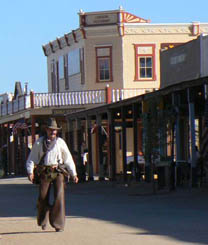 The desert was what got us kicked off—more than eighteen years ago—into the real pleasures of boondocking. When we found our special spot, off the highway, away from the roar of tires on the highway, away from city lights that dimmed the stars of the Milky Way, away from the dune buggies and ATVs, that was where we found the real, natural, untrammeled desert.
The desert was what got us kicked off—more than eighteen years ago—into the real pleasures of boondocking. When we found our special spot, off the highway, away from the roar of tires on the highway, away from city lights that dimmed the stars of the Milky Way, away from the dune buggies and ATVs, that was where we found the real, natural, untrammeled desert.
It’s that season again, and if you haven’t followed the snowbirds to the southwestern deserts yet, give it a shot. If even for only a couple of weeks. You might find something you never expected. To read more about boondocking in the deserts check out the link below to my ebook, Snowbird Guide to Boondocking in the Southwestern Deserts.
For more RVing articles and tips take a look at my Healthy RV Lifestyle website, where you will also find my ebooks: BOONDOCKING: Finding the Perfect Campsite on America’s Public Lands (PDF or Kindle), 111 Ways to Get the Biggest Bang for your RV Lifestyle Buck (PDF or Kindle), and Snowbird Guide to Boondocking in the Southwestern Deserts (PDF or Kindle), and my newest, The RV Lifestyle: Reflections of Life on the Road (PDF or Kindle reader version). NOTE: Use the Kindle version to read on iPad and iPhone or any device that has the free Kindle reader app.
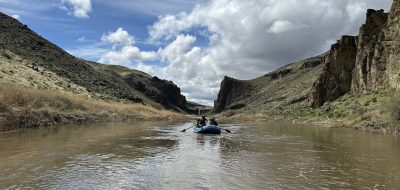
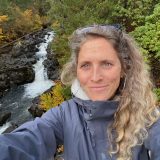
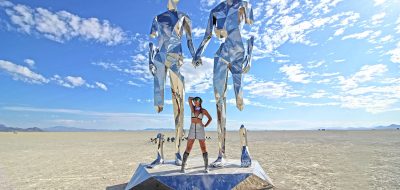

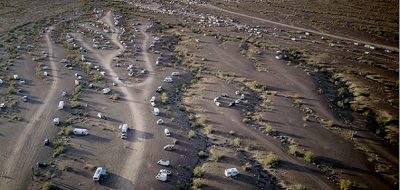

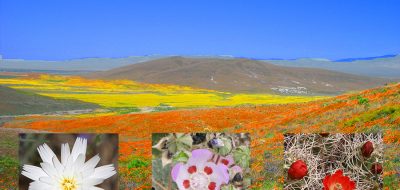
Pingback: http://www.pikavippik.fi/
Pingback: buy diablo 3 power leveling asia
Pingback: cash loan here click to view
Gary
A very nice “picture” of what the SW has to offer. So, thank you.
Gary Graves
Bob,
Thanks for this post. My wife and I plan to take a trip into the S. Cal and AZ this winter in Jan-Feb to see what is going on with the snowbirder life and we are very interested in all that you write.
Gary Graves, Oregon City, OR
Curtis
As always, this is a very interesting article about the AZ. desert.I spent the fall and winter of 04 and 05 in Yuma,AZ. We got a good long soaking rain in Spring of 05
And God set the desert aflame with the most magnifient awray of the most beautiful flowers I had ever seen in a desert. The next day and there after there was lots of green grasss growing out of all of the cracks of concrete and all over the
place.I will never forget that site.Every time I get a chance to go through Quartzsite,Az. in Jan. I have to stop or drive around to look at whats going on there. People everywhere and all types of R.V’s. Keep writing your interesting articles. I like reading them. From a 35 year R.V. nut. Bye y’all
lvtom
Many have found the desert a great retreat for the winter. It knocks the heck out of the preconceived notions about the desert too.